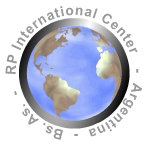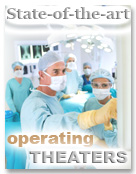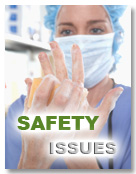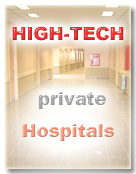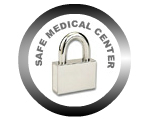
- RP Specialized in:
- Plastic Surgery in Argentina
- Treatments
- Breast Implant Surgery
- Rhinoplasty
- Vaser® Lipo System
- Liposuction
- Eyelid Surgery
- Tummy Tuck
- Breast Lift
- Facelift
- Lifting the Tip of the Nose
- Breast Reduction
- Double Chin Surgery
- Eye Shaping Surgery
- Chin Augmentation
- Ear Surgery
- Mentoplasty
- Eyebrow Lift
- Mini Facelift
- Cantopexy
- Deep Chemical Peel - Resurfacing
- Plastic Surgery Information
- Plastic Surgery Costs
- Cosmetic Procedures
- Hair Transplant
- Dermatology
- Phlebology
- Related information
- Related Links
- Web Directories
- Free Quotation
- Webmaster
» Chin Implant, Mentoplasty or Chin Surgery in Argentina
Table of Contents:
- » Pictures Before and After
- » General Information: risks, anesthesia, recovery, pre-operative tests, etc.
- » How to get a quote - Photographs necessary - Requirements.
» IN PLASTIC SURGERY, EXPERIENCE COUNTS...
» General Information: risks, anesthesia, recovery, pre-operative tests:
Who are the best candidates?
The best candidates for a chin implant are persons with a less prominent or receding chin, which sometimes can give the impression of a weak personality. Chin surgery significantly improves one of the most important facial features: the jawline. A weak chin is made more prominent to strengthen your personality and to provide a harmonious balance to the lateral projection of your face.
A chin implant may help to improve your look and self-confidence and give you a natural look without changing your facial features. A Chin Surgery may be performed separately or in conjunction with other procedures to make your face more harmonious and improve your profile, such as Rhinoplasty and Neck Liposculpture. Often a plastic surgeon may recommend chin surgery to a patient having Rhinoplasty in mind, in order to achieve facial proportion, as the size of the chin may magnify or minimize the perceived size of the nose.
What is the surgery like?
Chin implant is a quick surgery that lasts about 30 minutes and is performed under local anesthesia. It is a painless and outpatient procedure. The surgery starts with an external incision, especially under the chin, to create a pocket in front of the bone where a silicone implant will be placed to increase the projection of the chin.
In all cases, a pre-surgical test is required. The size of the implant is determined by means of a test performed on a patient’s picture or, if necessary, on an x-ray to obtain the balance between nose, lips and chin.
Are there any risks? Which complications may arise?
All surgeries involve Risks:
By giving you all the information you need to make a decision, including information on the risks involved, we show our respect for you and allow you to have the last say in all matters concerning your surgery. We also believe that this speaks volumes about RP Medical Center, about who we are and how we work. It is our responsibility to provide you with all necessary information. We consider that Quality goes hand-in-hand with Responsibility. All patients have a right to be explained how the surgical procedure will be performed, together with the potential risks and complications (which are not caused by a Physician’s errors or malpractice, but which derive from the surgery itself or cannot be anticipated), and the advantages and disadvantages of certain techniques, so that they can think it over and make a balance before making any final decision.
Any surgical procedure has risks (whether an optional surgery, which you choose to undergo, or an emergency surgery); some risks are common to all surgical procedures and others are specific to each type of surgery. No surgery is exempt from risk. A plastic surgery is, after all, a surgery. Risks (each under different incidence percentages; see below) range from post-surgery complications which can be secondarily solved (bad scarring, seroma, skin necrosis, etc.) to severe and fatal complications such as reactions to anesthesia, pulmonary embolism (blood clots or "small blood balls" which could migrate to the heart and block the pulmonary artery causing severe injuries or even death), among others.
In 1997, the results of a survey were disclosed in the United States, based on 400,675 surgical procedures involving Plastic Surgery and Surgical Repair, where 7 deaths were found. The rate of severe complications (hypotension, hematoma, infection, hypertension episodes, sepsis) was 0.47% (1 case every 230 patients). One death occurred every 57,000 patients, that is, a mortality rate of 0.0017%; slightly less than 1 death every 57,000 patients. The survey documented the approximate safety level for plastic surgeries conducted by certified plastic surgeons in authorized facilities in the US, during those years. Another survey conducted in the United States (from 1994 through 1998) further accounted for deaths occurred after Liposuctions. Survey findings reported one death every 5,000 patients, which represents a mortality rate of 0.02 % and 20 deaths every 100,000 liposuctions. The main cause of death was pulmonary thromboembolism.
Risks must be minimized by taking all appropriate preventive measures and complying with certain rules and requirements, including the requirement for pre-surgery tests, pre-operative and post-operative indications, the practice of surgeries in the proper facilities (which must be fully-equipped to cope with any inconveniences), patients’ full medical history, and their compliance with the Physicians’ guidelines after the surgery. It should be recalled that complications and risks may arise even where all precautions were taken and even if the patient is healthy. Given that these complications are not predictable, they may affect the patients of even the best surgeons in any country of the world, despite any precautions taken to reduce potential risks.
What kind of anesthesia do we use?
This surgery is performed under local anesthesia combined with sedation or under general anesthesia..
What are the expected results?
Results are quite noticeable and enhance the beauty of your face and harmonious balance.
What precautions should I take after surgery? When can I go back to normal life?
Alter care
Most patients can go back to work after 3 or 4 days following surgery. You should take plenty of rest during the first 48 hours, and keep a half-sitting position. No bandages will be applied. Chewing should be limited and a soft diet can be prescribed during the first week. The chin area may feel numb for some time. Tension in the treated generally subsides in one or two weeks. Swelling is normal in the area and should recede completely after one month and a half or so. You will notice the results. Avoid taking exercise for 2 to 3 weeks. Stitches will be removed on the 5th day following surgery.
If I do not live in the City of Buenos Aires: How long should I stay approximately?
You will need to stay in Buenos Aires for 8 nights and 9 days. Stitches will be removed on the 5th day following surgery.
Which are the required pre-surgical tests?
It is necessary to undergo the following pre-surgical tests within 1 month before the date of surgery:
- I. Blood test: hemogram, blood sugar, creatinin, hepatogram, clotting time, serology HIV.
- II. Cardiology: ECG and surgical risk.
Mandatory pre-surgical instructions:
- Put off smoking 1 month in advance (all smoking patients have an increased risk of skin suffering in the area being operated on and of a delayed healing of scars).
- Discontinue Aspirin intake (Acetyl salicylic acid) 1 month in advance.
- Discontinue Vitamin E intake 1 month in advance.
- Apply anti tetanus vaccine.
- Anticoagulated Patients: Consult your hematologist to change treatment schedule.
» How to get a quote - Photographs necessary to undergo a surgery - Stay - Requirements:
» To request the right quote and provide all necessary information, go to: "How to travel to undergo a surgery", and read "Step No. 1", "Make arrangements for a surgery by following these easy steps".
» Photographs required for Chin Implant: Please send 5 pictures of your face: 1 frontal photograph, 1 profile photograph of each side and 1 3/4 profile photograph of each side. It is important that pictures show the head and neck completely.
» Days of stay for Chin Implant: 8 nights, 9 days. For further information on stay days, minimum stay, and schedule, among other matters, go to "How to travel to undergo a surgery" , read "Step No. 3", " Make arrangements for a surgery by following these easy steps."
» Hospitalization: Not required. After the surgery, a 4-hour recovery period at the clinic is required. You may then move to your place of accommodation.
» Why are photographs necessary?
Not only are photographs necessary to avoid paying for an unnecessary and more expensive surgical procedure, but also to determine whether the surgery for which you have come to us is the best type of surgery for you. Photographs are essential for our Physicians to analyze your case, to know how to proceed and offer you the personalized treatment that sets us apart. Your photographs also enable us to make a more precise quote.

